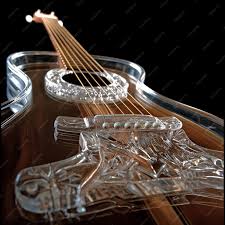
Instrument that contains strings nyt instrument that contains strings nyt tring instruments are a cornerstone of musical heritage across cultures and epochs. They produce sound through the vibration of strings, which can be activated by various methods, including plucking, bowing, or striking. This article will provide a comprehensive overview of string instruments, discussing their types, construction, playing techniques, historical context, notable musicians, and their role in different musical genres.
1. Types of String Instruments
String instruments are broadly classified into three categories based on how sound is produced:
1.1 Plucked Instruments
Plucked string instruments create sound when the strings are plucked with fingers or a plectrum. These instruments vary widely in form and function, often tailored to specific musical styles.
- Guitar: The guitar is perhaps the most versatile string instrument, available in various forms, including acoustic, electric, and classical. The acoustic guitar produces sound naturally through its hollow body, while electric guitars use pickups to convert string vibrations into electrical signals, which are then amplified. The guitar is pivotal in genres such as rock, pop, country, and blues.
- Harp: The harp is characterized by its triangular frame and multiple strings, which are plucked by the fingers. Harps have been used since antiquity, often associated with angelic music in Western traditions. In orchestral settings, the harp adds a unique timbre and can play both melody and harmony.
- Banjo: A staple of American folk music, the banjo features a circular body with a drum-like head and is played by fingerpicking or using a plectrum. Its bright, twangy sound is particularly suited to bluegrass and folk music, and it has gained popularity in various other genres.
- Mandolin: The mandolin has a distinct sound and shape, typically featuring eight strings in four pairs. It is often used in bluegrass, classical, and folk music, known for its rapid notes and melodies.
- Lute: The lute, prominent during the Renaissance and Baroque periods, has a pear-shaped body and a fretted neck. It has a rich, resonant sound and is often used in early music ensembles.
1.2 Bowed Instruments
Bowed string instruments produce sound through a bow drawn across the strings. This method allows for sustained notes and dynamic expression, making these instruments crucial in orchestral settings.
- Violin: The violin is one of the most expressive string instruments, known for its ability to convey a wide range of emotions. It features four strings and is played with a bow. The violin is fundamental in classical music but has also found its place in jazz, folk, and contemporary genres.
- Viola: Slightly larger than the violin, the viola has a deeper, mellower sound. It plays an essential role in string quartets and orchestras, often filling the harmonic gaps between the violins and cellos.
- Cello: The cello produces a rich, warm tone and is known for its ability to mimic the human voice. It is a vital part of orchestral music and has a prominent role in solo performances and chamber music.
- Double Bass: The largest string instrument, the double bass, provides the foundation of the harmonic structure in orchestras and jazz ensembles. Its deep, resonant tones anchor the music, and it is often used for both melodic and rhythmic purposes.
1.3 Fretted Instruments
Fretted instruments have a fingerboard with fixed metal frets, allowing players to produce various pitches by pressing the strings against the frets.
- Electric Guitar: The electric guitar revolutionized music in the 20th century, becoming a symbol of rock and pop culture. With various techniques, including power chords and soloing, it allows for extensive creative expression.
- Bass Guitar: A variation of the electric guitar, the bass guitar typically has four strings and is tuned an octave lower than the standard guitar. It plays a critical role in rhythm sections across genres, providing depth and groove.
- Ukulele: The ukulele is a smaller, four-stringed instrument originating from Hawaii. Known for its cheerful sound, it has gained popularity worldwide in various music styles, especially folk and pop.
2. Construction of String Instruments Instrument that contains strings nyt 2024
The construction of string instruments directly influences their sound quality, playability, and aesthetic appeal.
2.1 Materials
The choice of materials is crucial for both sound and durability:
- Wood Types: Different woods are used for various parts of string instruments. Common woods include:
- Spruce: Often used for the tops of violins and guitars due to its excellent sound projection.
- Maple: Common for back and sides, providing a bright, focused tone.
- Rosewood: Used for fingerboards and bridges, known for its density and tonal richness.
- Strings: Strings are made from various materials, impacting their sound and feel:
- Gut Strings: Traditionally made from animal intestines, they provide a warm, complex tone but are sensitive to humidity and temperature.
- Steel Strings: Brighter and more focused in tone, steel strings are durable and less affected by environmental factors.
- Synthetic Strings: These are designed to mimic gut strings while providing greater stability and durability.

2.2 Key Components
- Body: The body shape and size affect sound projection. For example, a larger body typically produces a louder sound, while a smaller body may provide a sweeter tone.
- Bridge: The bridge is essential for sound transmission, impacting the overall volume and tone. Its height and shape can affect string action, which influences playability.
- Fingerboard: The fingerboard allows players to press strings accurately. Materials such as ebony or rosewood are preferred for their smooth texture and durability.
- Fret Placement: Accurate fret placement is critical for intonation, ensuring that notes are in tune across the instrument.
3. Playing Techniques
Each type of string instrument requires specific playing techniques, and mastering these techniques is essential for effective performance.
3.1 Plucking Techniques
- Guitar:
- Fingerstyle: Players use their fingers to pluck individual strings, allowing for complex melodies and harmonies.
- Strumming: Using a pick or fingers to strum multiple strings creates chords and rhythmic patterns.
- Harp:
- Players use both hands to pluck strings, often incorporating techniques like glissandos (sliding fingers across strings) for dramatic effect.
3.2 Bowing Techniques
- Violin and Cello:
- Legato: Smooth, connected bow strokes create flowing phrases.
- Staccato: Short, detached bow strokes produce crisp, punctuated notes.
- Col legno: A technique where the bow is turned around to strike the strings with the wood, creating a percussive sound.
3.3 Fretting Techniques
- Electric Guitar:
- Bending: Players push the string across the fretboard to raise the pitch, adding expressiveness.
- Hammer-ons and Pull-offs: These techniques allow for quick note transitions without picking each note, creating fluid melodic lines.
4. Historical Context and Evolution
String instruments have a rich history that spans cultures and centuries.
4.1 Ancient Origins
The earliest string instruments can be traced back thousands of years. Archaeological findings reveal instruments resembling lyres and harps in ancient Mesopotamia and Egypt. These instruments were often used in religious and ceremonial contexts.
4.2 Development Through the Ages
- Middle Ages: The medieval period saw the development of various instruments, including the lute and early forms of the violin. These instruments were often played in courts and during social gatherings.
- Renaissance: The lute became extremely popular during this time, and composers began to write music specifically for string ensembles. This period also saw the emergence of the violin family, which would dominate classical music.
- Baroque Period: The violin, viola, cello, and double bass became central to orchestral music. Composers like Vivaldi and Bach wrote extensively for string instruments, showcasing their expressive capabilities.
- Classical and Romantic Eras: The repertoire for string instruments expanded significantly, with composers like Mozart, Beethoven, and Brahms writing intricate chamber works and concertos.
- 20th Century: The development of electric string instruments transformed music, leading to the emergence of genres like rock, jazz, and pop. The electric guitar became a cultural icon, while classical string instruments continued to evolve in both traditional and contemporary contexts.
5. Notable Musicians and Innovators
Throughout history, numerous musicians have pushed the boundaries of string instrument performance, each contributing to the evolution of music.
5.1 Classical Artists
- Pablo Casals: A pioneering cellist, Casals is credited with reviving interest in Bach’s cello suites. His expressive playing and interpretations set new standards for cello performance.
- Itzhak Perlman: Renowned for his virtuosity and emotive playing, Perlman has influenced generations of violinists and is celebrated for his performances in both classical and contemporary contexts.
- Yo-Yo Ma: A cellist known for his diverse repertoire, including classical, folk, and world music. Ma’s collaborations with various artists have expanded the reach of classical music.
5.2 Contemporary Innovators
- Jimi Hendrix: A revolutionary figure in rock music, Hendrix redefined the electric guitar’s sound and technique, influencing countless musicians across genres.
- Béla Fleck: A banjo virtuoso known for blending bluegrass with jazz, classical, and world music. Fleck’s innovative approach has broadened the banjo’s appeal.
- Kaki King: An acclaimed guitarist known for her percussive fingerstyle technique, King has pushed the boundaries of guitar playing, integrating elements of rock, folk, and jazz.
6. Cultural Significance and Influence
String instruments hold significant cultural importance in various societies, often serving as symbols of identity and tradition.
6.1 Traditional Music
In many cultures, string instruments are integral to traditional music. For example:
- Sitar: In Indian classical music, the sitar is a prominent instrument, known for its complex melodies and intricate ornamentation.
- Erhu: A two-stringed instrument from China, the erhu is used in traditional Chinese music, known for its expressive capabilities.
- Koto: A traditional Japanese instrument, the koto is played by plucking strings stretched over a wooden body, often used in classical and folk music.
6.2 Modern Fusion and Innovation
As cultures blend, string instruments have adapted to new contexts. For instance, the incorporation of the violin into jazz and rock has led to unique fusion genres, while traditional instruments are increasingly featured in contemporary music.
7. Conclusion
String instruments are not just tools for creating music; they are vessels of history, culture, and personal expression. From the haunting melodies of the violin to the driving rhythms of the banjo, each instrument carries its own story and significance. Their evolution reflects changes in musical styles, technological advancements, and cultural shifts, making them a fascinating subject of study.
As we continue to explore the rich world of string instruments, it becomes clear that they will remain at the heart of musical expression for generations to come. Their versatility, depth, and ability to convey emotion ensure that they will always hold a special place in the fabric of human creativity.For more detail please visit techwebinsights.com







